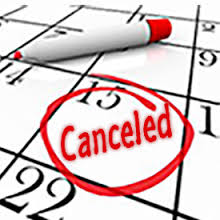How to Schedule PT Patients Effectively & With Fewer No-Show Headaches
As a physical therapy practice owner, you know how frustrating it can be when patients schedule appointments with you and don’t show up. It’s also an issue when you don’t have patients scheduled efficiently or in a way that allows you to make the most of your time. Learning how to schedule patients effectively is essential for making sure your practice runs smoothly. Here are some pointers to help you use your time efficiently and grow your practice.
Decide When You Want to Work
Your first step toward revamping your patient scheduling method should be asking yourself when you want to work. Some PTs like to keep traditional office hours while others don’t mind working evenings or weekends to accommodate their patients’ needs.
Of course, you should take the needs and availability of your staff into consideration, too. Choosing your office hours will help you determine how to schedule patients effectively.
Choose a Midpoint for Your Day
It can be irritating to have blank spots in your schedule, especially if they’re not aligned in a way that allows you to use your free time productively. One way to mitigate that is to choose a midpoint in your day (noon or 1 pm) and schedule your morning appointments backward from that time and your afternoon appointments forward. That way, you’ll be sure to have back-to-back appointments.
If you end up with free time at the beginning or end of the day, you can use it to handle administrative work, hold staff meetings, or schedule staff training.
Send Appointment Reminders
Patient no-shows can greatly impact the flow and organization of your practice. They can eat into your time, adding frustration and stress to an already busy day. Fortunately, there are things you can do to reduce the risk of no-shows.
One of the best ways to ensure patients show up — or at least let you know that they can’t make their appointment — is to use automatic appointment reminders. They can go out at intervals leading up to the appointment. Each reminder should give patients an opportunity to cancel or reschedule.
Have a Written Cancellation and No-Show Policy
Some physical therapists make the mistake of shrugging off cancellations and no-shows because they don’t want to upset or alienate their patients. We believe there’s a middle ground that allows you to hold the line and value your time without making patients feel that you don’t value them.
We suggest a written cancellation and no-show policy that is clearly displayed on your website and communicated to patients when they make an appointment. For example, you might tell patients you need 48 hours’ notice of a cancellation unless it’s an emergency, and that you’ll charge them a cancellation fee if they don’t give you enough notice. In addition, you might let patients know that they will be charged your full fee if they don’t show up for an appointment.
This strategy works best when combined with a robust appointment reminder system because it ensures that patients won’t have any doubt about when their next appointment is scheduled or what the penalties are if they miss it.
Emphasize the Need for Consistent Treatment
One of the reasons that patients miss physical therapy appointments is because they’re feeling better and they think the appointment isn’t necessary. It’s your job as a PT to educate your patients on why ongoing therapy is needed and the health risks of not completing a recommended course of treatment.
When your patients are in your exam room, make sure to explain what you’re doing, what effect the exercises you prescribe will have, and why sticking to their exercise and treatment regimen is necessary. If patients understand that skipping treatments may negatively impact their health going forward, they’ll be less likely to cancel or not show up for an appointment.
Allow Patients to Manage Their Own Appointments
Are you using a patient portal in your PT practice? If you’re not, then you should seriously consider getting one. Patient portals put appointment scheduling in the hands of patients. You can still set your own hours, but allowing patients to choose an appointment slot makes it more likely they’ll show up.
90% of providers offer patient portals, yet only a third of those use them wisely. We tell our clients who use the HENO portal that it’s essential to educate patients about the benefits of using it. You and your staff should be your portal’s biggest cheerleaders because your attitude about it will shape how your patients feel about using it.
Patient education is one of the keys to effective and efficient patient scheduling. The tips we’ve provided here will help you minimize no-shows and maximize your time with patients. Remember, time is money when you run a PT practice. Consistent no-shows can have a detrimental impact on your cash flow.
Ready to see how HENO can help you with patient scheduling? Click here to schedule a free demo!





